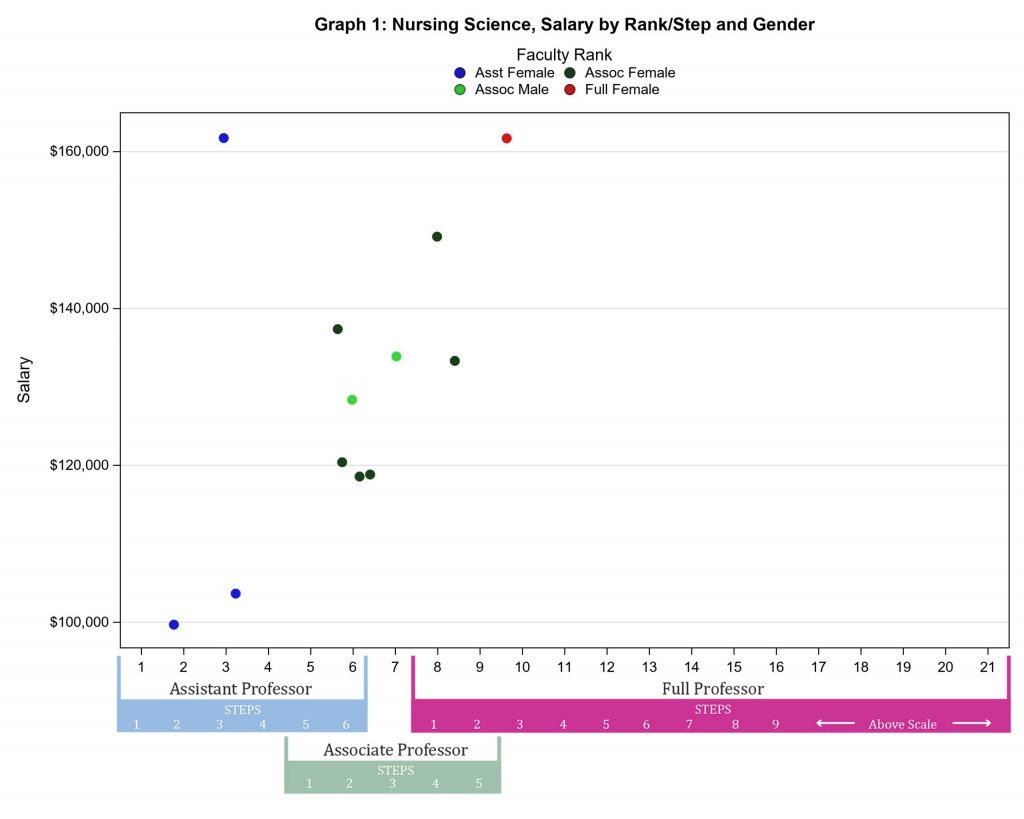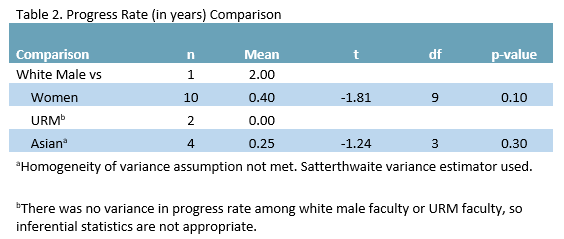The salary data for all Ladder Rank Faculty in the Bill and Sue Gross School of Nursing are plotted below.
As a function of rank, step, and gender:

As a function of rank, step, and ethnicity:

Multiple Linear Regression Analysis
Multiple regression analysis of salary vs rank/step. As indicated in Table 1, the simplest model with only demographic variables shows that relative to male faculty, women earn salaries that are about 4% lower, Asian faculty 12% lower, and URM faculty 4% lower than white faculty. Only 16% of salary variation is explained by this model. After all control factors are added, 72% of salary variation is explained by a model with demographic, experience, field, and rank variables. After adjusting for covariates, relative to male faculty, salaries are about 1% lower for faculty who are women, 7% higher for Asian faculty, and 19% higher for URM faculty. This model also shows that demographic variables are not statistically significant determinants of faculty salary. The final model predicted salaries within plus or minus 30.5%. (For technically-minded readers, the RMSE on the log base 10 scale is 0.058.)

Progression Analysis
The progression data for all Nursing Ladder Rank Faculty are plotted below. Normative progression is defined in the Progression Matrix.
Progress by gender:

Progress by ethnicity:

Progress Rate Analysis
Using a simple t-test, the results indicate that there is no statistically significant difference in progression rate means by either gender or ethnicity when compared to white male faculty. Normative progression is defined in the Progression Matrix.

School Level
Analyses at the school level yield a range of results. When controlling for experience, department within the school, and rank, salary differences are, for the most part, similar to that of the campus as a whole, but there are exceptions. Some units show statistically significant higher salaries for minority groups relative to white faculty, whereas other units show no statistically significant differences between ethnicities or genders. One school does show a statistically significant lower salary for women relative to men that is being studied further. Known limitations to the current analysis are that data on “Stop the Clock” are not readily available. Similarly, the impact of outside offers was not addressed.
General Campus Summary
In summary, we found no evidence for systemic inequity in salary associated with gender and/or ethnicity among faculty at the campus level. However, the study showed that women faculty progressed through the ranks at somewhat slower rates than White male faculty. Further analysis is needed to examine potential explanations of these trends and appropriate remediation.